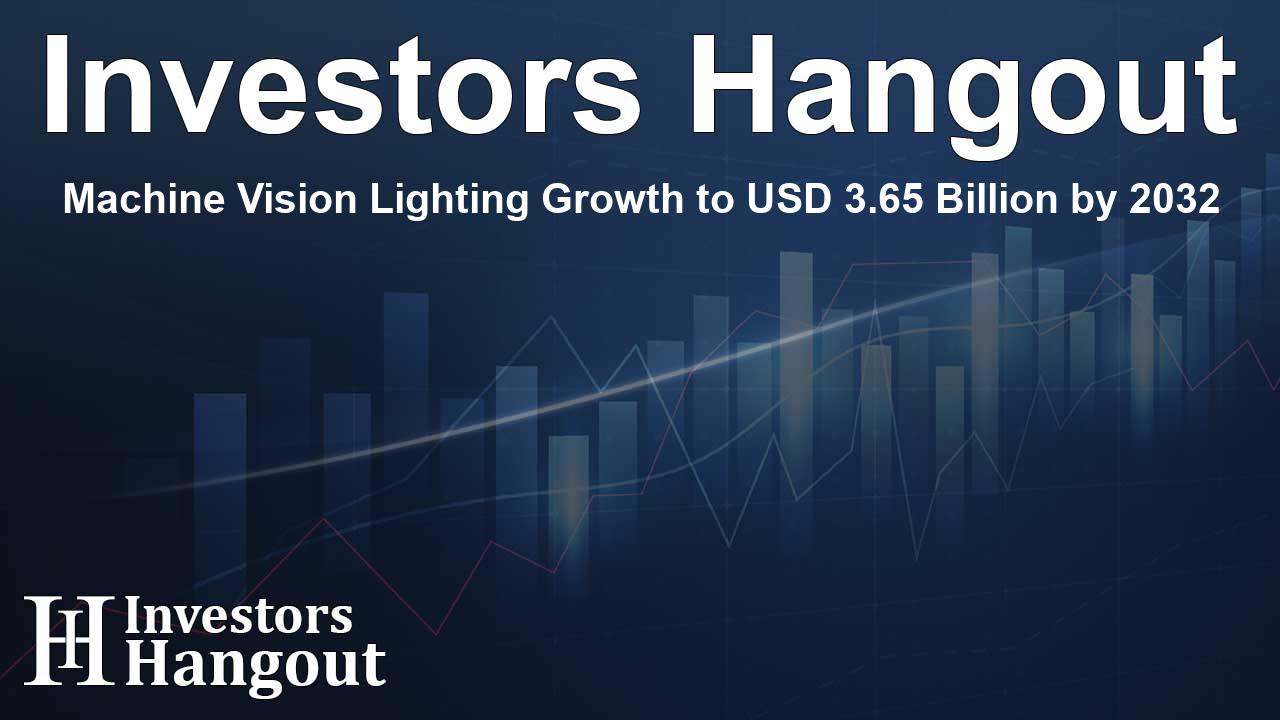Machine Vision Lighting Growth to USD 3.65 Billion by 2032

Machine Vision Lighting Market Overview
The Machine Vision Lighting market is on track for substantial expansion, projected to grow from USD 1.87 billion in 2024 to an impressive USD 3.65 billion by 2032. This growth reflects a compound annual growth rate (CAGR) of 8.73% from 2025 to 2032.
Driving Factors Behind Market Growth
The surge in demand for machine vision lighting stems from the need for precise inspection systems across various sectors, including manufacturing, electronics, automotive, and pharmaceuticals. The effectiveness of high-performance LED systems in providing quality image acquisition for intricate and rapid processing needs is undeniable. In the U.S. market, the projections illustrate growth from USD 0.32 billion in 2024 to USD 0.64 billion by 2032, fueled by similar market dynamics.
Technological Innovations Influencing Growth
Recent innovations, particularly the development of dual-mode sensing and advancements in phototransistor technology, are providing significant support to real-time vision capacities, further catalyzing the market's expansion.
Regional Analysis of Market Dynamics
In 2024, the Asia-Pacific region dominated the machine vision lighting market, holding a robust 44% revenue share, largely due to rapid industrialization and increased automation needs across multiple sectors. China's hefty investments in automation technologies have positioned it as a key player in this growth trend.
North America is anticipated to experience the fastest growth through 2032, with a CAGR of 9.97%. This rapid development is largely attributed to advancements in artificial intelligence, robotics, and precision vision systems, particularly in the U.S.
The European Market and Global Trends
Europe is a strong competitor in the machine vision market, particularly Germany, which has made significant strides in the automation and industrial sectors. Meanwhile, regions such as Latin America and the Middle East & Africa are seeing steady growth fueled by heightened industrial automation and the increasing need for advanced vision systems.
Market Segmentation and Dynamics
The machine vision lighting market is segmented by various attributes, allowing for detailed analysis of trends and forecasts.
Insights by Product Type
In 2024, the Xenon segment boasted a dominant 46% share of the machine vision lighting market and is expected to maintain its momentum with a projected CAGR of 10.50% through 2032. This growth is supported by Xenon’s intense brightness and suitability for demanding industrial settings.
The IR spectrum segment led the market with a 60% share in 2024, reflecting efficiency in low-light applications while the UV spectrum is expected to witness rapid growth due to its increasing popularity in critical applications like materials inspection and semiconductor manufacturing.
Application Specific Dynamics
The automotive sector accounted for 31% of the machine vision lighting market in 2024, driven by digital document processing demands. Meanwhile, from 2025 to 2032, the electronics and semiconductor sectors are expected to see the fastest growth, fueling the demand for high-precision imaging that is essential for quality assurance in microelectronics.
Leading Players in the Market
Several prominent companies are making significant impacts within the machine vision lighting landscape. Key market players include:
- Keyence
- Omron
- Cognex
- FLIR
- Basler
- Teledyne
- Sony
- Micro-Epsilon
- Advanced Illumination
- LUCID Vision Labs Inc.
- Tri-Tronics
- Advanced Materials
- Meta Phase
Recent Developments Shaping the Future
One noteworthy development includes the participation of Advanced Illumination at industry events where they showcase innovative lighting solutions, like the UltraSeal Ring Light for food safety and the Low Angle Dark Field Ring Light for automotive inspection applications.
Conclusion
The machine vision lighting market is poised for remarkable growth in the coming years, driven by the fusion of technological advancements and increasing automation needs across a range of industries. Individuals and organizations alike should keep a close watch as this market undergoes its transformation.
Frequently Asked Questions
What is the projected growth rate for the Machine Vision Lighting market?
The market is projected to grow at a CAGR of 8.73% from 2025 to 2032.
Which region currently holds the largest share of the market?
Asia-Pacific holds the largest share, accounting for 44% of the market in 2024.
What segment is expected to grow the fastest?
The Xenon segment is expected to experience the fastest growth rate, with a projected CAGR of 10.50%.
Which companies are leading in the Machine Vision Lighting market?
Key players include Keyence, Omron, Cognex, FLIR, and Basler, among others.
What are the main applications driving the market?
Notable applications include automotive, electronics, and semiconductor sectors, driven by increased automation and precision requirements.
About The Author
Contact Logan Wright privately here. Or send an email with ATTN: Logan Wright as the subject to contact@investorshangout.com.
About Investors Hangout
Investors Hangout is a leading online stock forum for financial discussion and learning, offering a wide range of free tools and resources. It draws in traders of all levels, who exchange market knowledge, investigate trading tactics, and keep an eye on industry developments in real time. Featuring financial articles, stock message boards, quotes, charts, company profiles, and live news updates. Through cooperative learning and a wealth of informational resources, it helps users from novices creating their first portfolios to experts honing their techniques. Join Investors Hangout today: https://investorshangout.com/
The content of this article is based on factual, publicly available information and does not represent legal, financial, or investment advice. Investors Hangout does not offer financial advice, and the author is not a licensed financial advisor. Consult a qualified advisor before making any financial or investment decisions based on this article. This article should not be considered advice to purchase, sell, or hold any securities or other investments. If any of the material provided here is inaccurate, please contact us for corrections.
